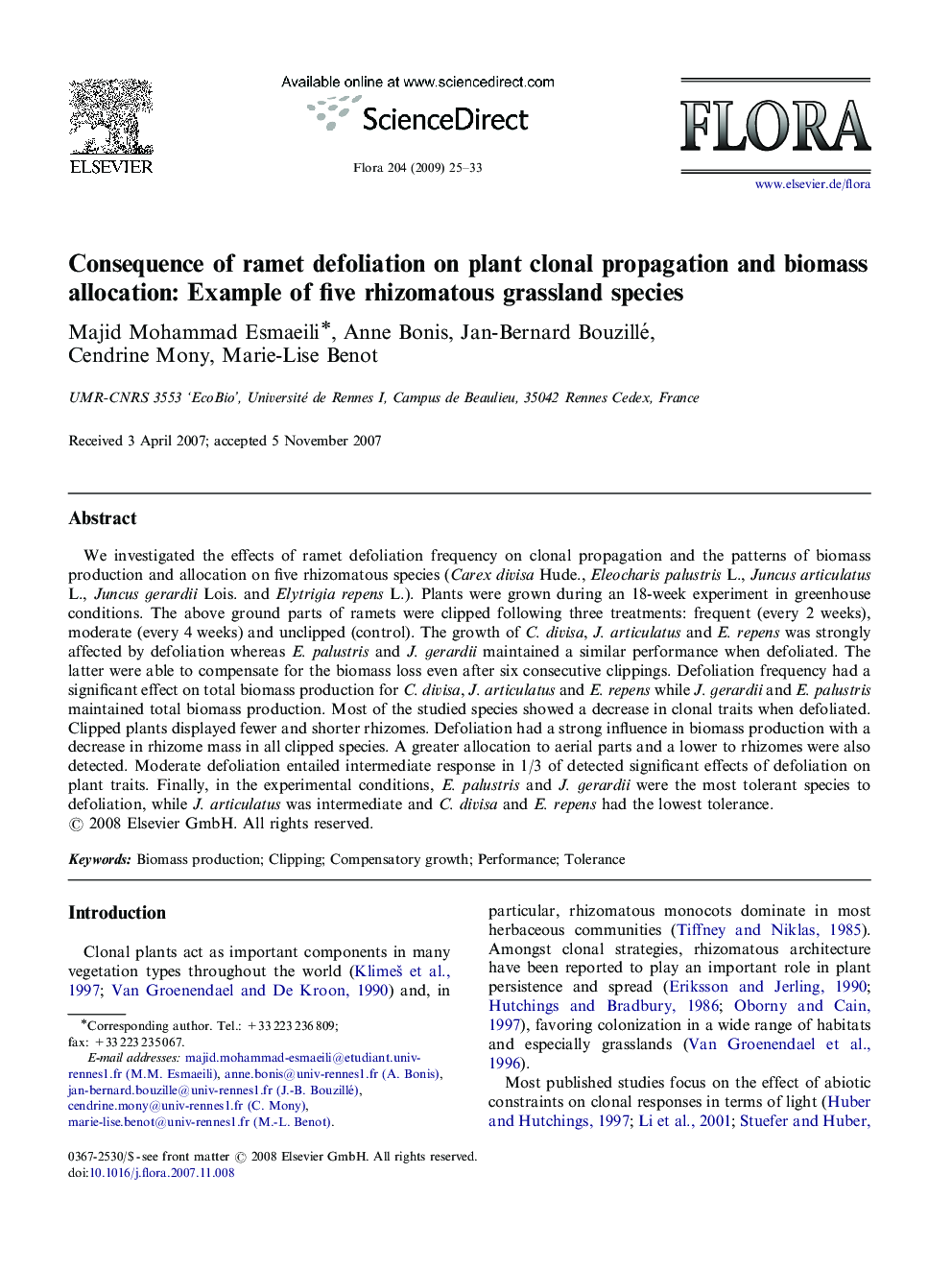| Article ID | Journal | Published Year | Pages | File Type |
|---|---|---|---|---|
| 2180053 | Flora - Morphology, Distribution, Functional Ecology of Plants | 2009 | 9 Pages |
We investigated the effects of ramet defoliation frequency on clonal propagation and the patterns of biomass production and allocation on five rhizomatous species (Carex divisa Hude., Eleocharis palustris L., Juncus articulatus L., Juncus gerardii Lois. and Elytrigia repens L.). Plants were grown during an 18-week experiment in greenhouse conditions. The above ground parts of ramets were clipped following three treatments: frequent (every 2 weeks), moderate (every 4 weeks) and unclipped (control). The growth of C. divisa, J. articulatus and E. repens was strongly affected by defoliation whereas E. palustris and J. gerardii maintained a similar performance when defoliated. The latter were able to compensate for the biomass loss even after six consecutive clippings. Defoliation frequency had a significant effect on total biomass production for C. divisa, J. articulatus and E. repens while J. gerardii and E. palustris maintained total biomass production. Most of the studied species showed a decrease in clonal traits when defoliated. Clipped plants displayed fewer and shorter rhizomes. Defoliation had a strong influence in biomass production with a decrease in rhizome mass in all clipped species. A greater allocation to aerial parts and a lower to rhizomes were also detected. Moderate defoliation entailed intermediate response in 1/3 of detected significant effects of defoliation on plant traits. Finally, in the experimental conditions, E. palustris and J. gerardii were the most tolerant species to defoliation, while J. articulatus was intermediate and C. divisa and E. repens had the lowest tolerance.
